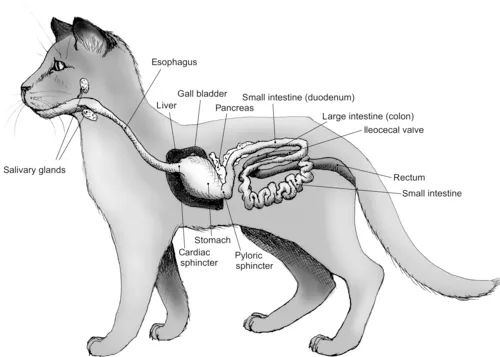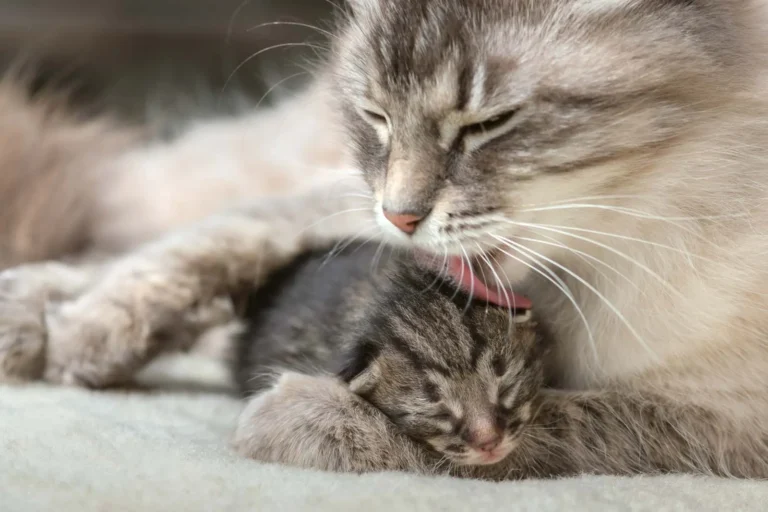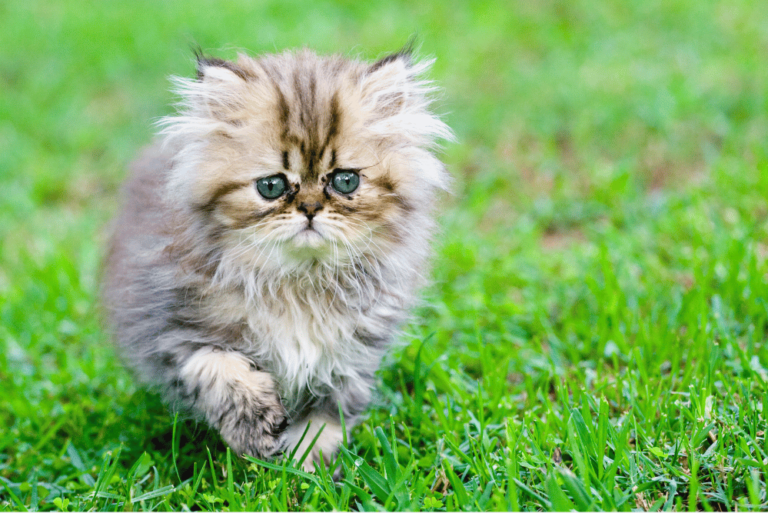Cat senses and sensory organs
Anatomy of Feline Perceptual System
The feline perceptual system is an intricate network of sensory organs that allows cats to navigate and interact with their environment. At the core of this system lies their remarkable vision. Cats have adapted to see clearly in low light conditions, making them expert hunters even in the darkest of nights. Their eyes are also equipped with a reflective layer called the tapetum lucidum, which enhances their night vision capabilities by reflecting light back through the retina. This unique feature gives cats their mesmerizing ability to see in the dark.
In addition to their extraordinary vision, cats possess acute hearing abilities that surpass those of humans. They have a broad range of hearing that extends into ultrasonic frequencies, allowing them to detect even the slightest movements or sounds. This remarkable sense of hearing is attributed to their highly sensitive inner ear and the specialized structure of the auditory system. Cats are finely attuned to the subtlest of sounds, enabling them to locate prey, communicate with each other, and easily sense danger. The feline perceptual system, with its exceptional vision and acute hearing, allows cats to thrive as skilled predators in their natural habitats.
The Remarkable Vision of Cats
Cats have long been admired for their exceptional vision, which is adapted to suit their stealthy and predatory nature. With a visual acuity far exceeding that of humans, cats have a keen ability to detect even the slightest movements. Their eyes are designed to gather as much light as possible, enabling them to see clearly in low-light environments. This adaptation is particularly useful for their nocturnal hunting activities, allowing them to observe their surroundings with remarkable precision.
Another fascinating aspect of feline vision is their ability to perceive motion discernibly better than humans. This is due to the presence of specialized cells in their retina called “motion-sensitive neurons.” These neurons play a crucial role in detecting rapid movement, enhancing cats’ ability to track moving objects accurately. In addition, cats have a wider visual field compared to humans, allowing them to have a nearly panoramic view of their surroundings. All these adaptations combine to create a visual system that is undeniably remarkable and contributes to the feline’s prowess as a hunter.
Understanding the Acute Hearing Abilities of Cats
Cats, as we all know, possess an incredible sense of hearing that far surpasses that of humans. Their acute hearing abilities are a result of a remarkable anatomical structure within their ears. The feline auditory system is equipped with 20 muscles that allow for precise control of the ear’s position, enabling cats to detect even the faintest of sounds.
This heightened sense of hearing not only allows cats to hear a wider range of frequencies, but also enables them to pinpoint the exact location of sounds with great accuracy. Their ears are designed to rotate independently, providing them with a 360-degree field of hearing. This exceptional auditory perception plays an essential role in their survival and hunting skills, allowing them to detect the subtlest movement of prey or potential threats from a distance. From detecting the flutter of a bird’s wings to picking up the faintest rustle of a mouse in the grass, cats’ acute hearing abilities truly set them apart in the animal kingdom.
Unraveling the Mystery of Feline Olfactory Sensitivity
Cats possess a remarkable olfactory system that allows them to perceive the world in ways we humans can only begin to comprehend. Their noses are packed with specialized receptors that detect and interpret a myriad of scents that are undetectable to our own feeble sense of smell. In fact, it is estimated that cats have approximately 200 million scent receptors, compared to our mere 5 million. This incredible sensitivity to odors not only helps them locate prey, but also plays a crucial role in their communication, territorial marking, and overall well-being.
The feline olfactory system is truly awe-inspiring, as their sense of smell is not only highly acute but also capable of discriminating between a vast array of different scents. Cats have the ability to identify individual odors and differentiate between familiar and unfamiliar scents, making their sense of smell a key component of their survival strategies. Moreover, research has shown that cats can even associate specific odors with certain emotions, memories, or experiences. This unique ability adds another layer to their complex sensory world and sheds light on the profound role that olfaction plays in a cat’s life.
The Tactile Sensations Cats Experience
Cats, like many other animals, possess a highly developed sense of touch that plays a crucial role in their daily lives. Their sensitive whiskers, or vibrissae, are an essential component of their tactile system. These whiskers are located on either side of the nose, above the eyes, and on the backs of their front legs. When a cat brushes against objects or moves through narrow spaces, the whiskers provide valuable information about the surroundings, helping to navigate and avoid potential obstacles. These specialized sensory hairs are incredibly sensitive, allowing cats to detect subtle changes in air currents and even gauge the size and distance of objects without visual cues.
In addition to their whiskers, cats also have a heightened sensitivity to touch on various parts of their bodies. The skin is richly supplied with nerve endings, making them especially receptive to different tactile sensations. We often witness cats rubbing against surfaces, not only for marking their territory but also to enjoy the pleasant sensation on their bodies. Gentle stroking can have a calming effect on cats, causing them to purr and relax. Conversely, an unexpected quick touch may startle them or trigger a defensive response. Understanding and respecting a cat’s tactile sensitivities helps create a comfortable and positive interaction between humans and these fascinating creatures.
Exploring the Extraordinary Taste Buds of Cats
Cats have long been recognized for their discerning taste buds and unique dietary preferences. Their extraordinary ability to detect different flavors is attributed to the specialized structure of their taste buds. Unlike humans, who have around 9,000 taste buds, cats possess significantly fewer, with an average of 470. These taste buds are densely clustered on the tip and sides of their tongues, allowing them to have a heightened sense of taste and an unparalleled culinary experience.
The taste buds of cats are specifically designed to detect a range of flavors, with a particular sensitivity to savory, or umami, tastes. This preference is due to their evolutionary history as obligate carnivores. While humans can perceive five primary tastes (sweet, sour, salty, bitter, and umami), cats have a more limited range, as they lack the ability to taste sweet flavors. This innate preference for meat-based flavors is thought to stem from their natural diet of prey, where the umami taste is most prevalent. Understanding the unique taste buds of cats not only sheds light on their selective eating habits but also helps in formulating nutritionally balanced diets for our feline companions.
The Intricate Balance System in Cats
The balance system in cats is an intricate and finely tuned mechanism that allows these mysterious creatures to move with grace and precision. This system, known as the vestibular system, plays a crucial role in maintaining a cat’s stability and coordination. Located in the inner ear, this complex network of structures and nerves helps cats navigate their environment with remarkable agility.
Within the vestibular system, there are tiny fluid-filled canals called semicircular canals. These canals are responsible for detecting the cat’s head movements and rotational motion. When the cat moves its head, the fluid inside these canals also moves, stimulating delicate hair-like cells called hair cells. These hair cells then send signals to the brain, providing crucial information about the body’s position in space. This constant feedback loop enables cats to jump and land with uncanny precision, even in the dark. The balance system in cats truly is a marvel of evolved engineering, allowing them to effortlessly navigate their surroundings with remarkable poise and grace.
Delving into the Mysterious Sixth Sense of Cats
Many cat owners have marveled at their feline companions’ seemingly supernatural abilities. One of the most enigmatic aspects of a cat’s perception is the so-called sixth sense. While humans possess only five senses – sight, hearing, taste, touch, and smell – cats appear to possess an additional sense that allows them to perceive things beyond the scope of our human understanding. The sixth sense of cats has mystified scientists, who are continuously seeking to unravel the secrets behind this uncanny faculty.
Cats possess an extraordinary ability to perceive subtle changes in their environment, a skill often attributed to their sixth sense. This remarkable sense allows them to detect minute variations in energy, vibrations, and electromagnetic fields that are otherwise imperceptible to humans. It is believed to be the reason behind their uncanny knack for predicting earthquakes and storms. Additionally, many cat owners have shared anecdotes of their cats seemingly knowing things before they happen, like anticipating a visitor or sensing danger. This heightened intuition is likely linked to their remarkable sixth sense, although the exact mechanisms behind it remain a subject of ongoing research.
What is the anatomy of the feline perceptual system?
The feline perceptual system comprises various sensory organs, including the eyes, ears, nose, tongue, and skin, that allow cats to perceive and interpret their environment.
How does the vision of cats differ from humans?
Cats have remarkable vision, especially in low light conditions. They possess a higher number of rod cells in their eyes, which enables them to see better in the dark. Additionally, cats have a wider field of view and superior peripheral vision compared to humans.
What makes cats’ hearing abilities so acute?
Cats have highly developed hearing abilities due to their ability to detect a broad range of frequencies. They can rotate their ears independently by up to 180 degrees, allowing them to pinpoint the source of a sound accurately.
How sensitive are cats’ sense of smell compared to humans?
Cats have a highly sensitive olfactory system, with about 200 million scent receptors compared to humans’ mere 5 million. This heightened sense of smell allows them to detect scents that are imperceptible to humans and plays a vital role in their communication and hunting abilities.
What tactile sensations do cats experience?
Cats have highly sensitive whiskers and specialized nerve receptors in their skin, which allow them to perceive even subtle changes in their surroundings. Their whiskers help them navigate through narrow spaces and determine the size, shape, and texture of objects they encounter.
Do cats have unique taste buds?
Yes, cats have a unique sense of taste. They lack the ability to taste sweetness, as they lack the taste receptor for it, but they have a heightened sensitivity to bitterness and are attracted to foods with a strong umami flavor.
How does the balance system in cats work?
Cats possess an intricate balance system, which includes the inner ear and specialized organs that detect changes in head position and movement. This allows cats to maintain excellent balance and coordination, even in precarious situations.
What is the mysterious sixth sense of cats?
The mysterious sixth sense of cats refers to their innate ability to detect and react to subtle environmental changes, such as impending earthquakes or approaching storms. While the exact mechanism behind this sixth sense is still not fully understood, it is believed to involve a combination of their heightened senses and intuitive instincts.







